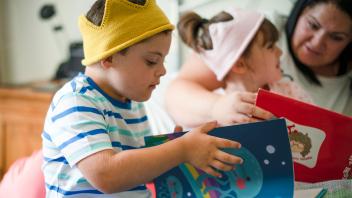Last week I spent an entire morning with students in 2nd, 3rd and 4th grades. A 3rd grade boy asked me my first name (I was introduced as Ms. Salvadore) before he left. When I told him, his wide grin was accompanied by a question: “Where are you from?” I was sorry to disappoint him. In spite of the way my name sounds, I’m not Hispanic (Italian father, Greek mother; English-speaking home). He said he thought maybe I was Honduran — like him.
I also am sorry to disappoint children when I can’t find books that reflect who they are. All readers should be able to see themselves in books as well as meet those who may come from different backgrounds. It is often difficult to meet the need, unfortunately. Diversity in children’s literature is very much in the media these days but it’s a topic that has been discussed, argued, and considered ever since first entered the field. Nonetheless, it’s good to see a groundswell of interest which I hope will translate into meaningful action.
In addition to the We Need Diverse Books campaign, the highly regarded School Library Journal has devoted an issue to related topics in the field. The U.S. Board on Books for Young People (USBBY) also promotes diverse books. Since 2006, USBBY has produced an annual list through the Outstanding International Books (OIB) List . Introducing young readers to the authors and illustrators who are responsible for making books can help grow diversity in the field.
Children and young people of all stripes should be encouraged to view writing, illustrating, publishing, media and production as attainable occupations. Many published writers and artists say they started thinking of themselves in that role first as children. Let’s work toward a world of books for young people that is as diverse as the United States.
About the Author
Reading Rockets’ children’s literature expert, Maria Salvadore, brings you into her world as she explores the best ways to use kids’ books both inside — and outside — of the classroom.

